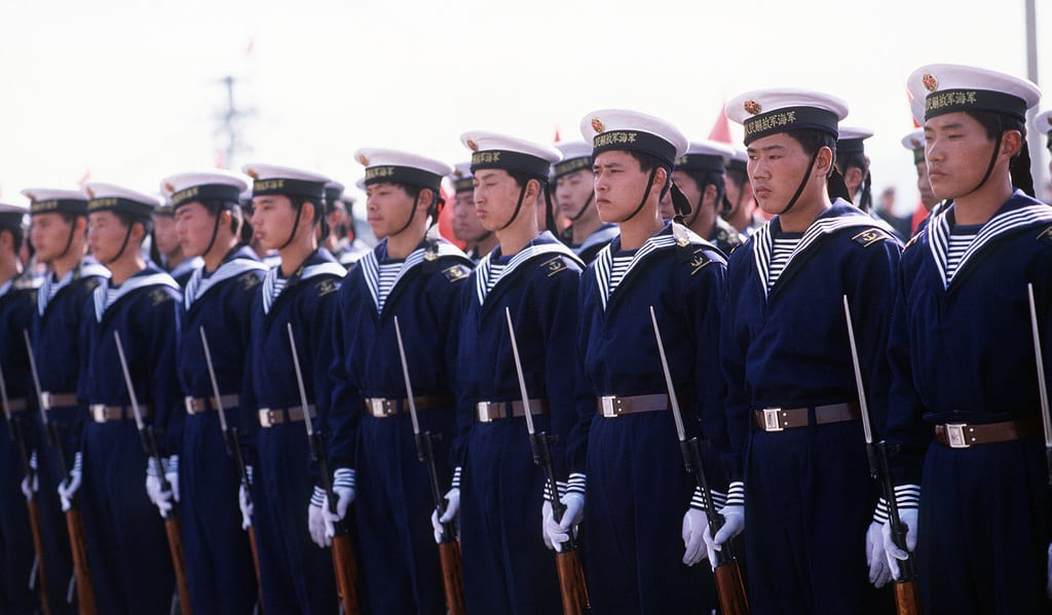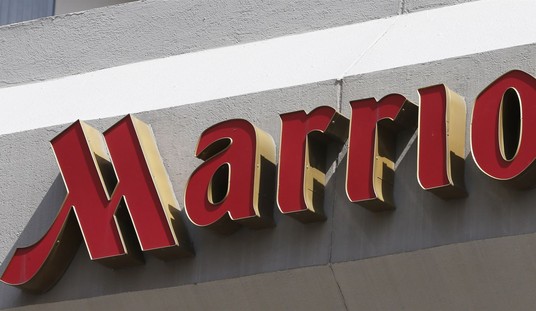Editor’s Note: In anticipation of Trump’s planned press conference to discuss China on Friday, we’re highlighting this excellent article by Stephen Green.
Author’s Note: This is Part I of a multipart series on what can be best described as The Second Cold War. You can read Part 2 here.
“The Capitalists will sell us the rope with which we will hang them.” – Vladimir Ilich Lenin
“The Capitalists will pay us to make the rope with which we will hang them.” – Deng Xiaoping, apparently
Here’s a bit of hard-earned wisdom known to every serious poker player, and learned the hard way by less-serious players: If you sit down at the table and can’t tell who the sucker is, then the sucker is you. In the world of geopolitics, American leaders gave the People’s Republic of China a seat at the table, never understanding that the sucker was us.
The original Cold War of the West vs the Soviet Union was probably inevitable. The USSR was a heavily militarized society founded on an expansionist and hostile ideology. Combine all that with traditional Russian paranoia about Western intentions (See: Napoleon, Hitler) and hostile armies squared off along the ceasefire lines from the Second World War, and we got a 45-year-long struggle between the freedom-loving West and an Evil Empire.
A cold war with Communist China was never inevitable. They were weak. We made them strong. Now the Communists are flexing their muscles like never before, and we need to acknowledge where we went wrong so that we can figure out what to do next.
On a VIP Gold video chat with Bryan Preston and Yours Truly earlier this week, our own Stephen Kruiser bemoaned Richard Nixon’s decision to open up to the People’s Republic in 1972, but I think we have to give him a pass on that one. Looking at our situation in the context of the early ’70s, China was a necessary counterweight to growing Soviet military strength. Not to mention our own troubles at home, linked in large part to the war in Vietnam. Beijing and Moscow were having a serious falling out behind the scenes (and sometimes not-so-much behind the scenes) and given our precarious position at home and abroad, Nixon was almost certainly correct to exploit the divide between the PRC and the USSR.
I should also note that while I’ll refer to the People’s Republic by its proper name, and refer to its ruling party as Communist, “There are,” as David Goldman has noted more than once, “more Marxists in Cambridge, Massachusetts, than in all of China.”
The first sucker bet we made with the PRC was when President Jimmy Carter went all-in on diplomatic recognition of Beijing over Taipei. A curious holdover from the Second World War and the Chinese Civil War, there was One China with two governments. When the Nationalists were forced from the mainland in 1949, they set up shop on Taiwan, which eventually evolved into a modern multi-party democracy. Mao and his (still genuinely Marxist) Communist Party ruled the mainland. Both governments claimed to be the sole legitimate government of China, and up until Carter’s surprise move, the U.S. recognized the Taiwan-based Republic of China as the legitimate government. It was a legitimacy the Communists desperately needed, and one Carter had no business giving them.
President Ronald Reagan was pretty much stuck with Carter’s decision, but deftly straddled the fence between recognition of Beijing and support for Taipei. In July of ’82, Reagan issued the “six assurances” to Taiwan, which included “pledges that it will honor the Taiwan Relations Act, it would not mediate between Taiwan and China, and it had no set date to terminate arms sales to Taiwan.” Nevertheless, Reagan also continued Nixon-like stronger ties with the mainland as part of his “We win, you lose” strategy to defeat the Soviets in the First Cold War.
Relations soured after the Tiananmen Square Massacre in which Communist troops slaughtered unknown thousands of peaceful democracy protestors, many of them young college students. But things soon returned to the “normal” under President Bill Clinton, whose “constructive engagement” policy taught Beijing that America’s favor could be bought — and bought cheap.
M. Dowling reminds us:
The “Chinagate” fundraising scandal plagued the 1996 Bill Clinton-Al Gore campaign and Hillary was very much involved. Chinagate aka Commercegate is the most serious scandal in U.S. history. It involves the transfer of America’s most sensitive technology, including but not limited to nuclear missile and satellite technology, possibly in exchange for millions of dollars in contributions to the 1996 Clinton-Gore re-election effort and the Democratic National Committee.
The Chinagate scandal of 1996 ended up in an award of 900,000 in attorney’s fees and costs to Judicial Watch ten years later.
The scandal was an apparent scheme by the Clinton administration to sell seats on taxpayer-funded trade missions in exchange for campaign contributions to the 1996 Clinton-Gore campaign.
Clinton’s pro-Beijing diplomacy culminated in the Republican Congress approving the China Trade Bill, which gave the PRC the chance to join the World Trade Organization. WTO membership was supposed to make Beijing a permanent and fair player in the global trade markets, and that increased wealth and contact with the West would liberalize the PRC politically.
But that’s not quite what happened:
Between 1999 and 2011, almost 6 million U.S. manufacturing jobs were lost. A landmark study attributed nearly 1 million of those manufacturing job losses, and 2.4 million total job losses, to competition from China. But because major technological advances such as automation occurred in that same time frame, economists disagree about exactly how responsible Chinese competition was for job losses in manufacturing.
Rather than becoming a member of the global community in good standing, Beijing embarked on the systematic theft of our intellectual property, our manufacturing base, our trade secrets, and the plans to some of our most secret military hardware. Chinese Communist hackers steal data by the terabyte. With a cruel and shortsighted cynicism, our own political and business leaders acquiesced to all this for decades.
PJMedia’s own Bryan Preston noted on a VIP Gold video chat with Stephen Kruiser and earlier this week, perhaps the strongest card we let Beijing play was the visa card, if you’ll pardon the pun. Giving student visas to mainland Chinese was supposed to make them more like us. Instead, American universities now regularly spout PRC propaganda (“Calling it Wuhan is racist!”) while China uses our training to train up their next generation. David Goldman noted:
Thanks to American graduate schools, Chinese universities have assembled a world-class scientific and engineering faculty. Four out of five doctoral degrees in computer science and electrical engineering in America are awarded to foreign students, of whom Chinese are the largest contingent. Only 5% of American undergraduates major in engineering, which means there aren’t a lot of available faculty positions for recent doctorates.
Then there’s our own national news media. Right now, during a pandemic aided and abetted by the PRC’s lies, American news organizations happily parrot Beijing’s talking points — even as their own friends and neighbors get sick and die in New York City.
So here we are today, at least 40 years into a Secon Cold War made possible by our own willingness to be the suckers at the table. We’re faced off against a nonideological yet “strategic rival” whose economy in some ways is already more powerful and productive than our own, and who seeks nothing less than to dominate the global order we established.
Where do we go from here?
Stay tuned for Part II, just for our VIP members.









